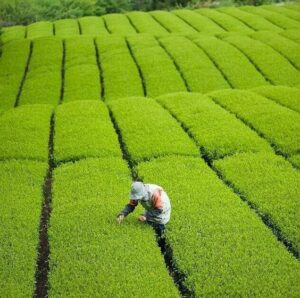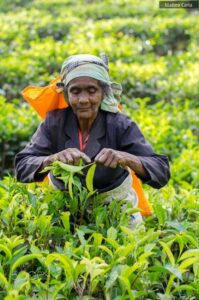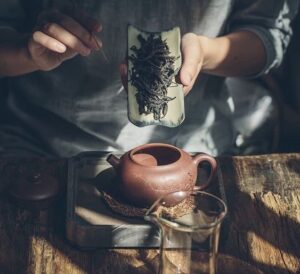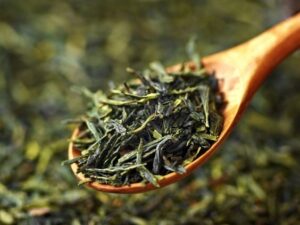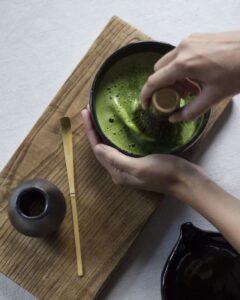
The history of tea in Thailand can be traced back to ancient times, beginning with the legendary discovery of tea in China around 2,167 BC. According to folklore, Emperor Shen Nong accidentally brewed tea when a branch fell into a pot of boiling water, resulting in a refreshing drink that became increasingly popular. As tea culture evolved, it spread to various countries, including Japan, India, and Thailand.
During the Sukhothai period, tea drinking was introduced in Thailand through cultural exchanges with China, though the specifics of its importation remain unclear. Historical records, including letters from Mr. Laloubere during the reign of King Narai, suggest that the Thai people enjoyed Chinese tea, typically without sugar, while some individuals used rock sugar to sweeten their beverage. At this time, hot tea was primarily consumed in the courts of officials or offered to monks, although the exact type of tea consumed—whether domestically grown or imported—remains uncertain.
Clear evidence of tea cultivation in Thailand began during the reign of King Rama V, also known as King Chulalongkorn, who was inspired by the popularity of tea and coffee during his travels to Europe, particularly England. In his efforts to foster diplomatic relations, he brought back Ceylon tea seedlings, which were planted in Doi Saket, an area well-suited for tea cultivation. The Ceylon tea imported to Thailand, originally known as Assam tea, was rebranded as Ceylon tea after its cultivation in Sri Lanka. Today, century-old tea trees still thrive in Doi Saket and Doi Wawi.
As tea cultivation gained traction in Northern Thailand, it coincided with efforts to replace opium crops with alternative vegetables. This led to the development of a distinct Thai tea formula using Assam tea, which was tailored to suit local palates and ultimately evolved into the well-known Thai tea we enjoy today.
The initial stages of tea cultivation in Thailand were concentrated in the northern mountainous regions, eventually expanding to provinces such as Chiang Mai, Chiang Rai, Mae Hong Son, Phrae, Nan, Lampang, and Tak. In 1937, entrepreneurs Mr. Prasit and Mr. Prathan Phumchusri established Bai Cha Tra Phukhao Company Limited, building a small tea factory in Mae Taeng District, Chiang Mai Province. They sourced fresh tea leaves from local villagers but faced challenges with quality and knowledge. In response, they invited tea experts from China to enhance their understanding. By 1939, the brothers began cultivating their own tea in Chiang Dao District and expanded their efforts in Mae Taeng District. This period also saw the introduction of various tea varieties from India, Taiwan, and Japan for experimental planting and research.
In 1965, the Royal Forest Department promoted tea production by granting a concession for a tea garden covering 2,000 rai in Ban Bang Huai Tak, Tambon Inthakhin, Amphoe Mae Taeng, Chiang Mai Province, primarily focused on Western-style tea. Subsequently, in 1987, Raming Tea Company expanded the concession to Siam Tea Company, which encouraged local farmers to cultivate new tea gardens and purchase fresh tea leaves to produce Western tea under the Lipton brand—a practice that continues today.
While the precise timeline for the introduction of green tea to Thailand remains unclear, it is believed to have occurred during experimental planting in the North, gaining momentum as Japan’s tea-drinking culture became more influential.
Prior to the adoption of Japanese tea culture, which emphasizes powdered matcha prepared with a chasen, two primary types of green tea were consumed in Thailand:
- Japanese-Style Green Tea: This type does not require roasting the leaves and retains higher nutritional content, including protein and vitamin E.
- Chinese Green Tea: This variety is roasted in a hot pan, imparting a distinct flavor profile.
Historically, Japanese green tea was influenced by Chinese practices, particularly during the early Heian period when Japanese priests traveled to China to study tea cultivation and herbal knowledge. These priests introduced tea to the Japanese imperial court, where it gained acceptance and led to cultivation in palace herbal gardens, initially enjoyed primarily by the elite. The Kamakura period saw the monk Eisai returning from China with tea seeds and production techniques, promoting tea as a beneficial herb and acknowledging its mental and health benefits.
The Muromachi period marked the inception of the traditional tea ceremony, with priest Shuko Murata emphasizing simplicity and mindfulness in tea consumption. This cultural shift paved the way for modern Japanese tea practices. By the Meiji period, advancements in tea production, techniques, and machinery allowed for significant increases in yield and facilitated the global export of tea. Today, green tea has become a staple in daily life, cherished for its flavor and health benefits across the world.
Source:
http://photography.nationalgeographic.com
http://web2.mfu.ac.th/other/teainstitute/?p=291&lang=th
บทความจาก : Fuwafuwa

